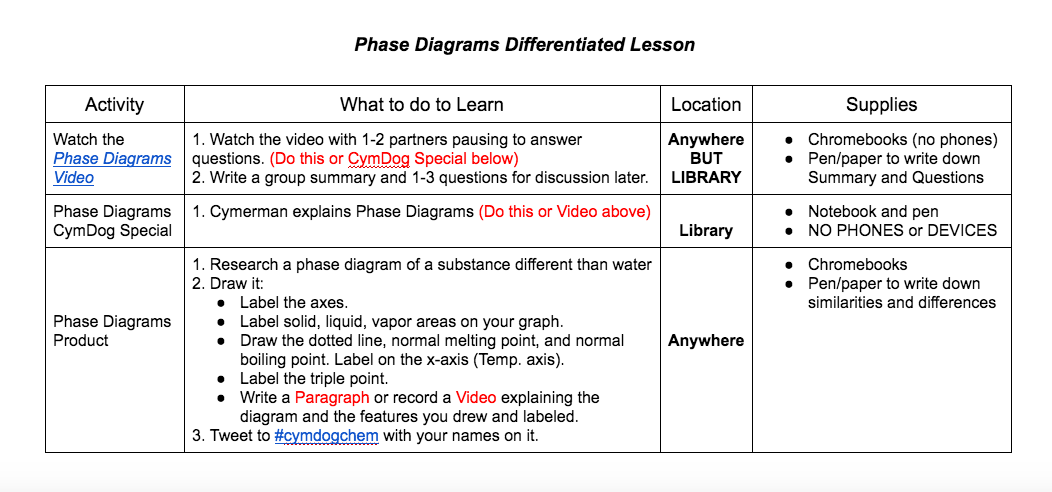2 Quick Ways To Differentiate Instruction And Give Students Choice
While learning styles theory is a myth and we do not want to categorize students as visual, auditory etc., we do want to differentiate instruction to help in learning and to validate student individuality. Giving students choice in how they learn does this and often motivates.
Here are 2 quick tips on how to quickly differentiate a lesson and build in choice.
Information Facilitation
Students don't have to all be doing the same thing to get the information. I used the lesson above in my chemistry classes today and it worked well. I gave students choice: they could watch this Phase Diagram Video on a Chromebook or receive Direct Instruction (DI) from me. I told them I would cover the same concepts as the video and they could ask questions. if they watched the video, they were required to partner up and discuss and answer questions I embedded into the activity.
Man was it neat! The students moved to different areas of the room and were engaged. All but one of the classes ended up as a pretty even split. Most students in my 6th hour preferred DI. But what was really encouraging the entire day was the fact that I did not have to redirect any students during the facilitation stage. I did not get interrupted once! First, the group was smaller. Second, we agreed that if you choose DI, you put your phone away and pay attention.
Student Product
All students were then expected to form teams of 2-3 and research and draw a phase diagram (Phase Diagram Product) for a different substance with all its bells and whistles. Once they had their drawing, they were given a choice to explain it in writing or talking in a video, but I would have accepted anything they can conjure up.
Following up instruction with creating something must be done so that students process the concepts, but we can give them choice in how they do it. Traditionally, a teacher would lecture and then give a worksheet.
Bonus
Instant feedback was the bonus my students received. As I was free to walk around and talk to students in the latter stage of the lesson, I asked questions and pointed out misconceptions. I asked students to tweet their product to #CymDogChem. I had some time in class to read the tweets and watch the videos, so I could comment and give feedback as well. Some of it was verbal to prompt students who did not explain their diagrams to do it.
Or I could have lectured and gave a highly motivating worksheet. Not!
It's time we start making choices to help students learn, not teachers manage, and the latter will take care of itself.
You have the power to change the world. Use it often.
Confession: I threw this lesson together during my prep and served it up the same day. Is that bad?


